#supernova
Text

29 notes
·
View notes
Text
hey bestieeee ummmmmm would you wanna brainwash me and condition me to go absolutely brainless and drooly at the sight of your cock, ready to be your little cocksleeve? as friends of course
4K notes
·
View notes
Text
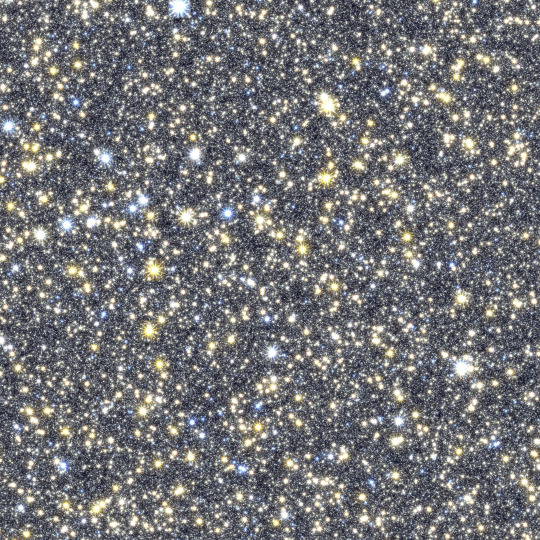
A simulated image of NASA’s Nancy Grace Roman Space Telescope’s future observations toward the center of our galaxy, spanning less than 1 percent of the total area of Roman’s Galactic Bulge Time-Domain Survey. The simulated stars were drawn from the Besançon Galactic Model.
Exploring the Changing Universe with the Roman Space Telescope
The view from your backyard might paint the universe as an unchanging realm, where only twinkling stars and nearby objects, like satellites and meteors, stray from the apparent constancy. But stargazing through NASA’s upcoming Nancy Grace Roman Space Telescope will offer a front row seat to a dazzling display of cosmic fireworks sparkling across the sky.
Roman will view extremely faint infrared light, which has longer wavelengths than our eyes can see. Two of the mission’s core observing programs will monitor specific patches of the sky. Stitching the results together like stop-motion animation will create movies that reveal changing objects and fleeting events that would otherwise be hidden from our view.
youtube
Watch this video to learn about time-domain astronomy and how time will be a key element in NASA’s Nancy Grace Roman Space Telescope’s galactic bulge survey. Credit: NASA’s Goddard Space Flight Center
This type of science, called time-domain astronomy, is difficult for telescopes that have smaller views of space. Roman’s large field of view will help us see huge swaths of the universe. Instead of always looking at specific things and events astronomers have already identified, Roman will be able to repeatedly observe large areas of the sky to catch phenomena scientists can't predict. Then astronomers can find things no one knew were there!
One of Roman’s main surveys, the Galactic Bulge Time-Domain Survey, will monitor hundreds of millions of stars toward the center of our Milky Way galaxy. Astronomers will see many of the stars appear to flash or flicker over time.
youtube
This animation illustrates the concept of gravitational microlensing. When one star in the sky appears to pass nearly in front of another, the light rays of the background source star are bent due to the warped space-time around the foreground star. The closer star is then a virtual magnifying glass, amplifying the brightness of the background source star, so we refer to the foreground star as the lens star. If the lens star harbors a planetary system, then those planets can also act as lenses, each one producing a short change in the brightness of the source. Thus, we discover the presence of each exoplanet, and measure its mass and how far it is from its star. Credit: NASA's Goddard Space Flight Center Conceptual Image Lab
That can happen when something like a star or planet moves in front of a background star from our point of view. Because anything with mass warps the fabric of space-time, light from the distant star bends around the nearer object as it passes by. That makes the nearer object act as a natural magnifying glass, creating a temporary spike in the brightness of the background star’s light. That signal lets astronomers know there’s an intervening object, even if they can’t see it directly.
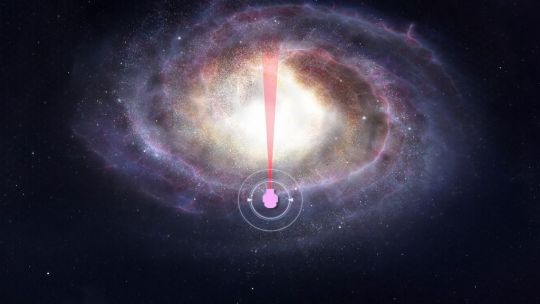
This artist’s concept shows the region of the Milky Way NASA’s Nancy Grace Roman Space Telescope’s Galactic Bulge Time-Domain Survey will cover – relatively uncharted territory when it comes to planet-finding. That’s important because the way planets form and evolve may be different depending on where in the galaxy they’re located. Our solar system is situated near the outskirts of the Milky Way, about halfway out on one of the galaxy’s spiral arms. A recent Kepler Space Telescope study showed that stars on the fringes of the Milky Way possess fewer of the most common planet types that have been detected so far. Roman will search in the opposite direction, toward the center of the galaxy, and could find differences in that galactic neighborhood, too.
Using this method, called microlensing, Roman will likely set a new record for the farthest-known exoplanet. That would offer a glimpse of a different galactic neighborhood that could be home to worlds quite unlike the more than 5,500 that are currently known. Roman’s microlensing observations will also find starless planets, black holes, neutron stars, and more!
youtube
This animation shows a planet crossing in front of, or transiting, its host star and the corresponding light curve astronomers would see. Using this technique, scientists anticipate NASA’s Nancy Grace Roman Space Telescope could find 100,000 new worlds. Credit: NASA’s Goddard Space Flight Center/Chris Smith (USRA/GESTAR)
Stars Roman sees may also appear to flicker when a planet crosses in front of, or transits, its host star as it orbits. Roman could find 100,000 planets this way! Small icy objects that haunt the outskirts of our own solar system, known as Kuiper belt objects, may occasionally pass in front of faraway stars Roman sees, too. Astronomers will be able to see how much water the Kuiper belt objects have because the ice absorbs specific wavelengths of infrared light, providing a “fingerprint” of its presence. This will give us a window into our solar system’s early days.
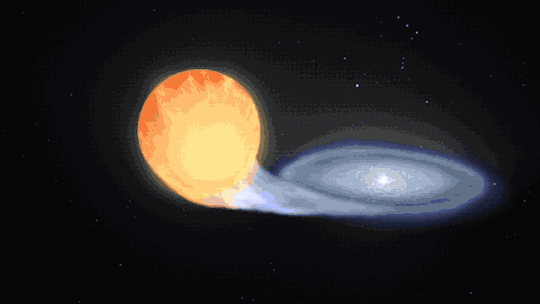
This animation visualizes a type Ia supernova.
Roman’s High Latitude Time-Domain Survey will look beyond our galaxy to hunt for type Ia supernovas. These exploding stars originate from some binary star systems that contain at least one white dwarf – the small, hot core remnant of a Sun-like star. In some cases, the dwarf may siphon material from its companion. This triggers a runaway reaction that ultimately detonates the thief once it reaches a specific point where it has gained so much mass that it becomes unstable.
youtube
NASA’s upcoming Nancy Grace Roman Space Telescope will see thousands of exploding stars called supernovae across vast stretches of time and space. Using these observations, astronomers aim to shine a light on several cosmic mysteries, providing a window onto the universe’s distant past. Credit: NASA’s Goddard Space Flight Center
Since these rare explosions each peak at a similar, known intrinsic brightness, astronomers can use them to determine how far away they are by simply measuring how bright they appear. Astronomers will use Roman to study the light of these supernovas to find out how quickly they appear to be moving away from us.
By comparing how fast they’re receding at different distances, scientists can trace cosmic expansion over time. This will help us understand whether and how dark energy – the unexplained pressure thought to speed up the universe’s expansion – has changed throughout the history of the universe.
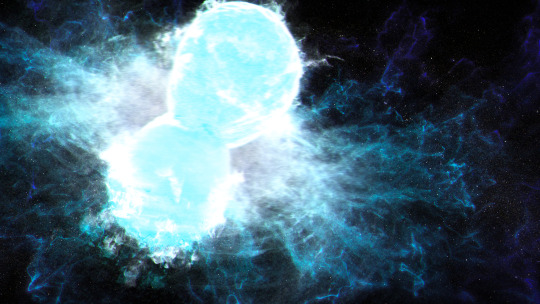
NASA’s Nancy Grace Roman Space Telescope will survey the same areas of the sky every few days. Researchers will mine this data to identify kilonovas – explosions that happen when two neutron stars or a neutron star and a black hole collide and merge. When these collisions happen, a fraction of the resulting debris is ejected as jets, which move near the speed of light. The remaining debris produces hot, glowing, neutron-rich clouds that forge heavy elements, like gold and platinum. Roman’s extensive data will help astronomers better identify how often these events occur, how much energy they give off, and how near or far they are.
And since this survey will repeatedly observe the same large vista of space, scientists will also see sporadic events like neutron stars colliding and stars being swept into black holes. Roman could even find new types of objects and events that astronomers have never seen before!
Learn more about the exciting science Roman will investigate on X and Facebook.
Make sure to follow us on Tumblr for your regular dose of space!
#NASA#astronomy#telescope#Roman Space Telescope#dark energy#galaxies#cosmology#astrophysics#stars#galaxy#space images#time#supernova#Nancy Grace Roman#black holes#neutron stars#kilonova#rogue planets#exoplanets#space#science#tech#technology#Youtube
2K notes
·
View notes
Text


Sometimes you have to stop mid fight and just go, "idk wtf is even happening, but we look so cute in our matching outfits"
Kon becoming Supernova so he keeps the super name and alien/space theme is so.....<3
Tim is seconds away from slamming into Bart and bowling both of them over lol
#my art#my artwork#detective comics#dc fanart#batman#dccomics#dc comics#tim drake#dc robin#red robin dc#conner kent#kon el#superboy#supernova#dc impulse#bartholomew allen#bart allen#wonder girl#cassie sandsmark#young justice 1998#yj98#young justice#redesign#core four#young just us
907 notes
·
View notes
Text

The Rooftop Five (2023)
#one piece#monkey d. luffy#luffy#zoro#law#kid#killer#wano#rooftop five#supernova#worst generation#kaido#big mom
2K notes
·
View notes
Text
SUPERNOVAAAAA


Two versions since I liked both the og color base and the rainbow colors I planned to use Nova is from Ghost in the Machine by @venomous-qwille <3
951 notes
·
View notes
Text
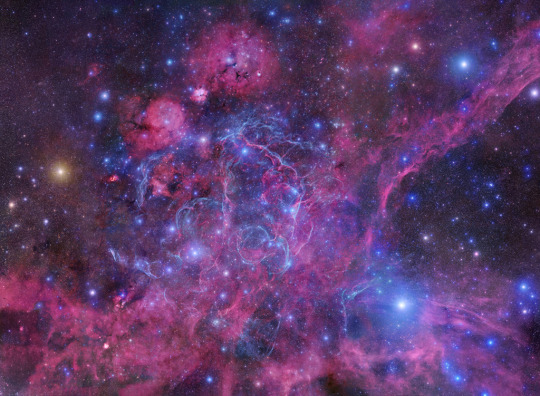
Vela Supernova Remnant
1K notes
·
View notes
Text
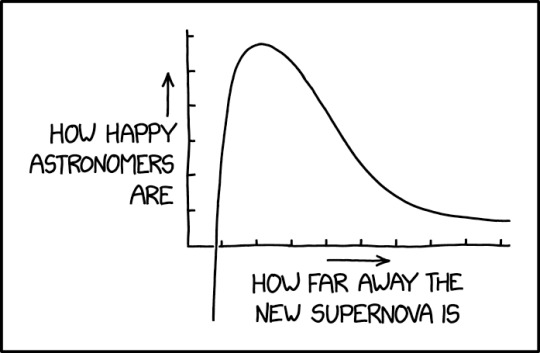
They're a little cagey about exactly where the crossover point lies relative to the likelihood of devastating effects on the planet.
Supernova [Explained]
Transcript
[A graph is shown where the axes are labeled and arrows are pointing upward above the Y axis label and to the right above the X axis label. There is a single line on the graph that peaks close to the Y axis, where it reaches close to the top of the drawn part of the Y axis. Then the line approaches the X axis asymptotically towards the far right. But closer to the Y axis, the peak line goes almost vertically down, and continues far below the "bottom of the chart", outside of the boundary of the graph that was only supposed to be above the X axis.]
Y axis: How happy astronomers are
X axis: How far away the new supernova is
553 notes
·
View notes
Text
Vela Supernova Remnant Nebula
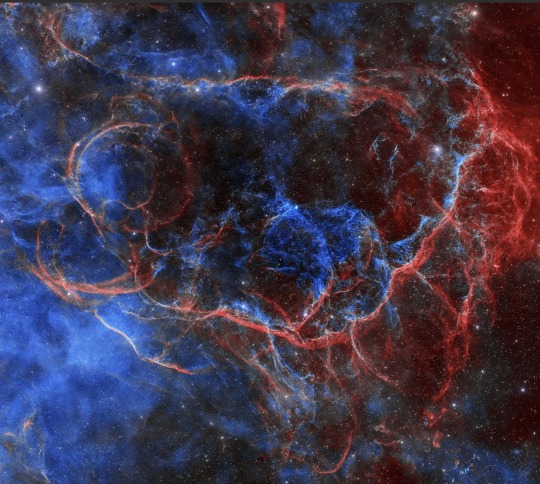
#nebula and quasar#heart nebula#planetary nebula#nebulosa#nebula#veil nebula#supernova#astronomy#nasa#astronomers#universe#astrophotography#nasa photos#astrophysics#outer space#nasawebb#hubble space telescope#astronews#i love astronomy#astrography#astro notes#astro community#astro observations#astroblr#astrology observations#astro boy#space travel#space science#space exploration#space
467 notes
·
View notes
Text

what do you think lead to this?
#one piece#eustass kid#trafalgar law#monkey d. luffy#luffy#fanart#supernova#eustasscaptainkid#law one piece#trafalgardwaterlaw#the worst generation
424 notes
·
View notes
Text

the infinite desires
#artists on tumblr#photography#astrophotography#astrophysics#astro observations#astronomy#astro notes#astro community#astronomical objects#astronomical observation#astronomical#astronomers#astrology observations#observatories#cosmic secrets#cosmology#cosmic dreams#cosmic poetry#cosmic art#outer space#planets#space art#galaxy#other worlds#infinite universe#expanding universe#supernova
321 notes
·
View notes
Text


Supernova is switching it up 👽🌠 new name new look & same silly guaranteed 👍 ID is in alt text!
#me when i get to theme the space superheroes after space>>>>>>>#kon el#connor kent#kon el kent#superboy#supernova#kon supernova#kon redesign#superfam#dc#dc comics#fan art#dcu#fanart#art#dcu comics#dc fanart#comics#young justice#cowboydraws
3K notes
·
View notes
Text
should i fuck you stupid or make you stupid and then fuck you?
5K notes
·
View notes
Text
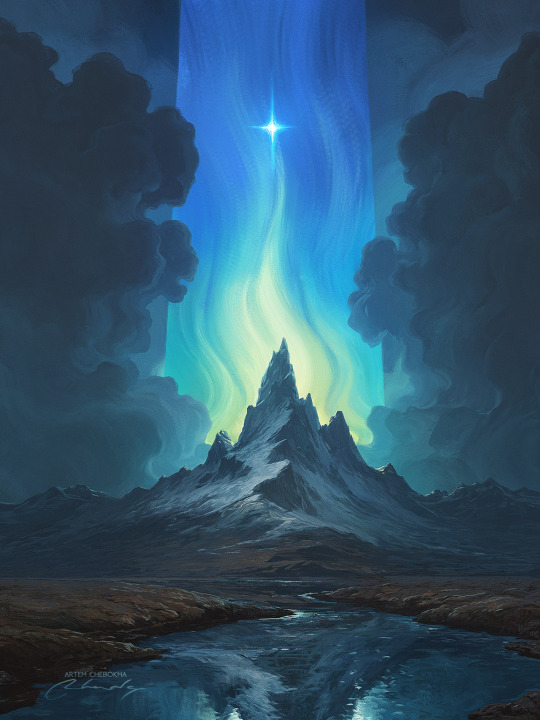
Supernova - RHADS
365 notes
·
View notes
Text
Y'all, I'm getting emotional.
One of my absolute favorite astronomical bodies is the Crab Nebula, or Messier 1. The Crab Nebula is a "planetary nebula", which means it's the enormous, beautiful corpse of a once-giant star. The star that formed the Crab Nebula went supernova and exploded in 1054, and was so bright at the time of its death that you could see it from Earth during the day - for almost a month. For that month, it was brighter than every single thing in the sky except the moon and the sun. Some of you have probably heard of it, or have at least seen this Hubble picture:

But how many of y'all have zoomed in?
Inside all of those lovely rainbow clouds is the supernova remnant - a neutron star. A neutron star is made of the densest possible material that we know of - any denser, and it'd collapse the rest of the way into a full-fledged black hole. Neutron stars are so unimaginably dense that they're not even made of an element, not really. The star at the center of the Crab Nebula is one, single atomic nucleus 12 miles in diameter, made entirely of close-packed neutrons. One teaspoon would weigh 10 million tons. Imagine taking a passenger jet, condensing it down to the size of a mote of dust, and then filling a spoon with that dust. And it spins too - 30 times a second. That spinning causes huge jets of material to eject from the poles at half the speed of light. The incredibly powerful magnetic field traps any stray particles and accelerates them in circular paths through the nebula. Just LOOK at this shit! See the ghosty shadows of the jets, stretching from the top left corner to the bottom right?

But what's really making me lose it is this Hubble timelapse. The star is making ripples. Its moving. Its been dead for almost a thousand years, but its still putting on its final, spectacular show.
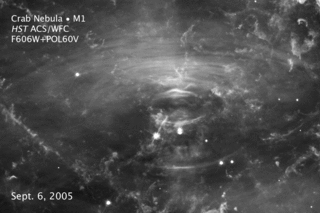
It never ceases to amaze me that the things we call "dead" stars are some of the most dynamic, energetic, and awe-inspiring objects in the universe. Normal stars are downright STAGNANT compared to what these so-called "stellar remnants" get up to. Maybe we shouldn't be thinking of them as dead stars, but as the next phase in a star's life. Just as caterpillars "end" their mundane lives and metamorphose into something new and strange and capable of flight, these stars destroy themselves to leave behind something far more exotic, playing at the edge of the laws of physics in ways we still don't fully understand.
#space#crab nebula#neutron star#supernova#god I fucking love neutron stars#ask me sometime about the first pulsar#hubble#spost#space post
740 notes
·
View notes
Text

SUPERNOVA
The next stage in the cycle is SUPERNOVA, the implosion signals the beginning of the end.
You can sign up to be notified when the project goes live (with the early bird tiers ) HERE
357 notes
·
View notes